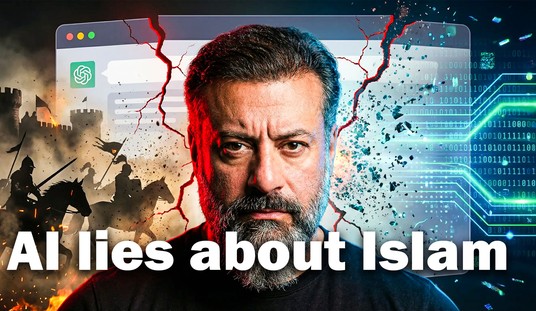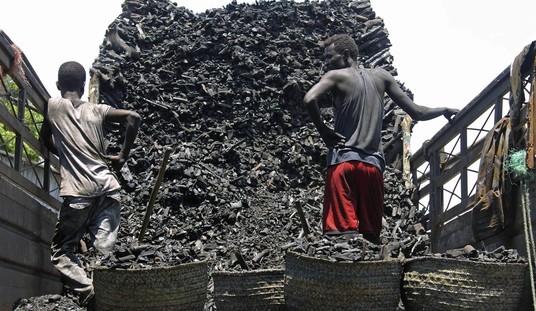There are ongoing protests across Iran, as retirees, workers, hospital staff, and numerous guilds and unions march against the worsening economic situation.
Many more ordinary people, including housewives, grandmothers, and the 35-45% of citizens who are unemployed, are demonstrating against the rationing of water and electricity.
November 16—Isfahan, central Iran
— People's Mojahedin Organization of Iran (PMOI/MEK) (@Mojahedineng) November 16, 2025
Retirees of the steel and mining industry resume protests as their pensions fail to meet their most basic needs and regime authorities continue to ignore their plight.
"Reformists and hardliners are the enemy of retirees," protesters chant.… pic.twitter.com/BNzBf38kCe
Iran is a failing state, perched on the precipice of catastrophe. Decades of massive spending on the counterproductive and fruitless search for nuclear weapons have bankrupted the treasury. Money that could have been spent upgrading their electrical grid and building desalination plants went to the will-o'-the-wisp goal of creating a nuclear deterrent. The Iranian people are now paying the price for that shortsightedness.
The protests aren't being covered in the Western press. The primary sources of information are the National Council of Resistance of Iran (NCRI) and various Middle East think tanks. The NCRI is not an entirely reliable source of information, but it's much better at reporting the news than the Iranian regime.
When the UN finally "snapped back" harsh economic sanctions in August after Iran refused to obey UN Security Council resolutions, the dire economic situation became even worse.
The GDP has collapsed. The latest IMF outlook for Iran finds its $401 billion GDP shrinking to $341 billion by the end of this year. "Iran’s Central Bank estimates that $14 billion exited the country in the last nine months of 2024. That comes atop $20 billion the year before," reports Iran International.
Unless drastic action is taken, says Iranian President Masoud Pezeshkian, Tehran is facing “Day Zero," where millions of people will be forced to go without potable water. Pezeshkian has floated the idea of moving the capital city, as Tehran may become uninhabitable.
Detailing Iran's massive economic and infrastructure problems makes the regime's desire to possess non-nuclear advanced weapons even more curious. The people are at the end of their patience. Revolutionary slogans and anti-American and anti-Zionist rhetoric aren't filling bellies or slaking the thirst of the people. And yet, the mullahs, terrified of threats within and without, created weapons that are currently Israel's worst nightmare.
Iran has leaned on China's advanced technology to build and test a hypersonic missile. The Middle East Forum (MEF) reports that Iran deployed a hypersonic glide vehicle during the recent conflict with Israel that easily penetrated their defenses. There is also a hypersonic ICMB, the Khorramshahr-4, in the final stages of testing that will soon be deployed.
Iran has not only developed but has operationally deployed its hypersonic arsenal. During the conflict of June 2025, the regime used its Fattah-series (Fattah-1 and Fattah-2) hypersonic glide vehicles (HGVs) in retaliatory strikes. These weapons successfully penetrated Israel’s multi-layered air defense network, striking targets in Tel Aviv and Bnei Brak and causing significant damage. The Fattah series boasts speeds of up to Mach 15 and a range of up to 1,243 miles, making all of Israel easily reachable from Iranian territory.
More alarmingly, Iran has unveiled a more advanced system: the Khorramshahr-4. This ballistic missile reportedly possesses a range of around 3,000 kilometers and can attain speeds exceeding Mach 12. Its most destabilizing feature is a payload capable of carrying up to 80 submunitions. This cluster munition design enables saturation attacks that could overwhelm even the most robust defenses. From launch in western Iran, this weapon can reach Tel Aviv in under 10 minutes, leaving virtually no time for countermeasures or evacuation.
Israel's strategic doctrine has shifted dramatically "from a reactive posture of containment to a proactive strategy of threat elimination," according to MEF. The strike that took out Iran's entire enriched uranium stockpile and the centrifuges that could have created more were the first operational example of this new doctrine.
The new doctrine will no longer seek to "manage" the conflict with Iran. Israel is now going to play to win, and any threat, such as the new hypersonic missile, will be dealt with militarily. "Defense Minister Israel Katz has stated the objective is no longer merely to contain the threat at the periphery but to systematically degrade and dismantle Iran’s core ability to develop and project power from its homeland," reports MEF.
This doctrine will not only apply to Iran. Other regional powers like Syria and Iraq will also have the means to threaten Israel at some point and can expect that the Israelis will not sit idly by and watch the gathering danger and do nothing.
It's the hypersonic missile that has both the U.S. and Israel worried. And for good reason.
The unique flight characteristics of these weapons present an almost insurmountable challenge to existing air defense systems. Unlike ballistic missiles, which follow a predictable, high-arching trajectory, hypersonic weapons combine extreme speed with unpredictable maneuverability within the atmosphere. They fly at altitudes between 20 km and 60 km—too low for exo-atmospheric interceptors like the U.S. Navy’s SM-3, which are designed to engage targets in the vacuum of space, and too high, fast, and erratic for most endo-atmospheric systems like Patriot and THAAD. Wargaming simulations conducted by military analysts consistently demonstrate that even advanced U.S. carrier strike groups can be overwhelmed and sunk by coordinated, saturation attacks using hypersonic missiles, highlighting the vulnerability of even the most technologically superior assets.
Iran is nearing collapse. They may seek to start a war to try to distract the people from their troubles. It's a strategy that rarely works, but for desperate leaders, it might be the last gasp of a failed state.










